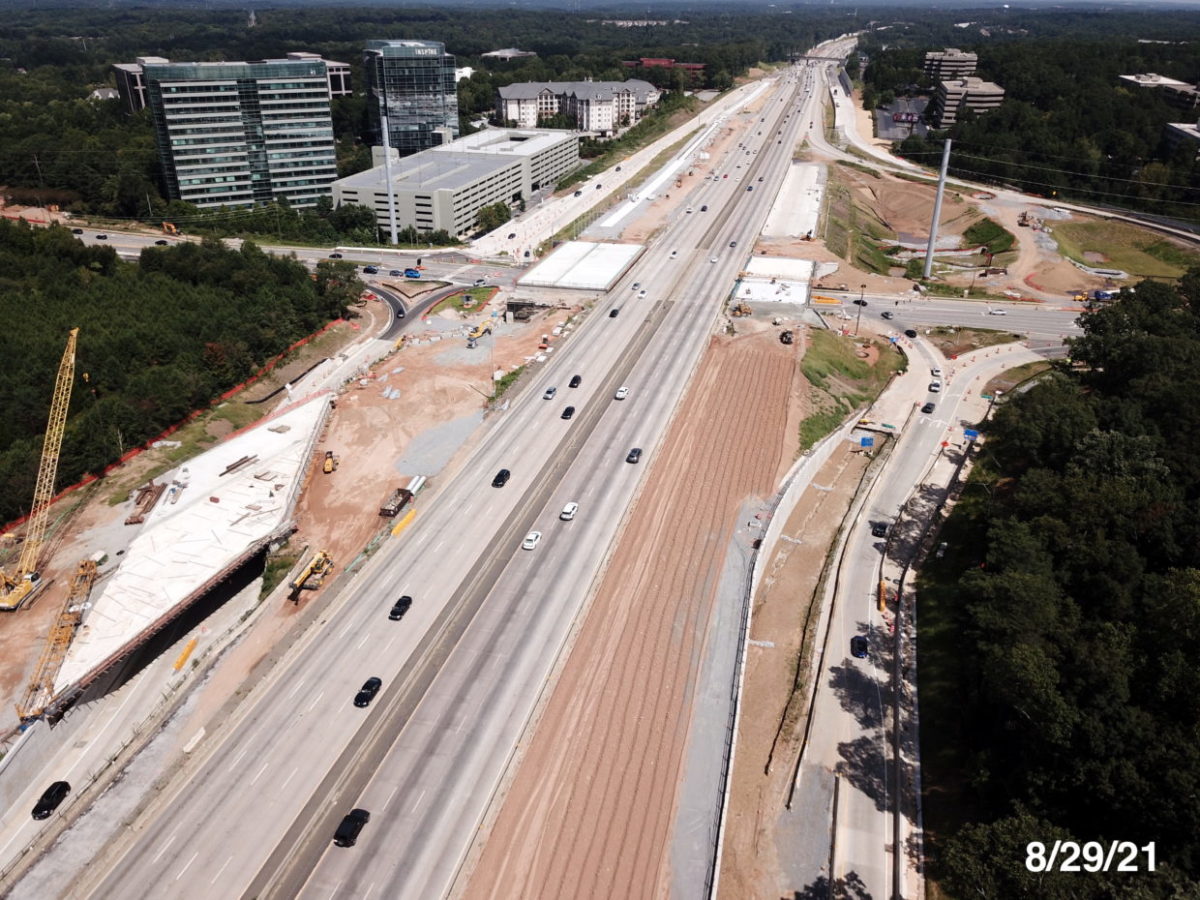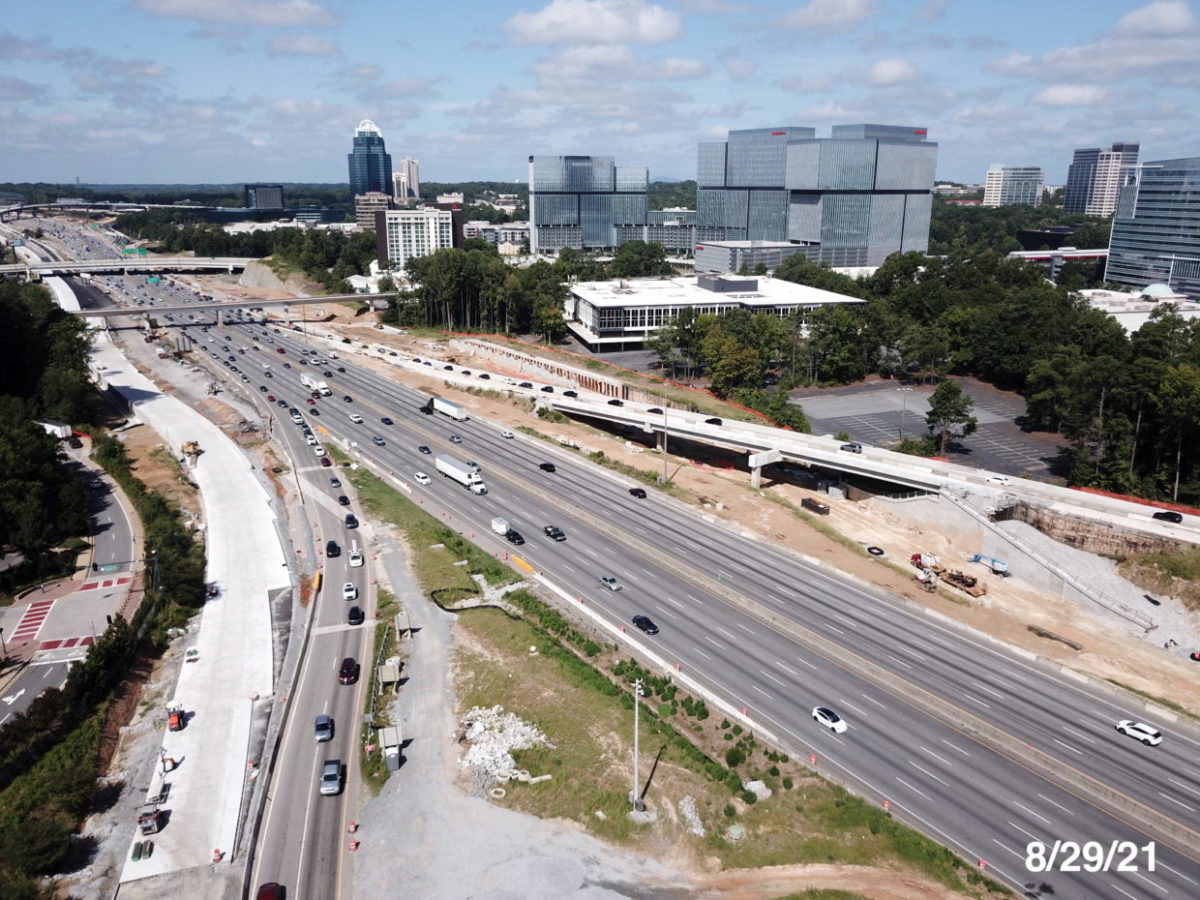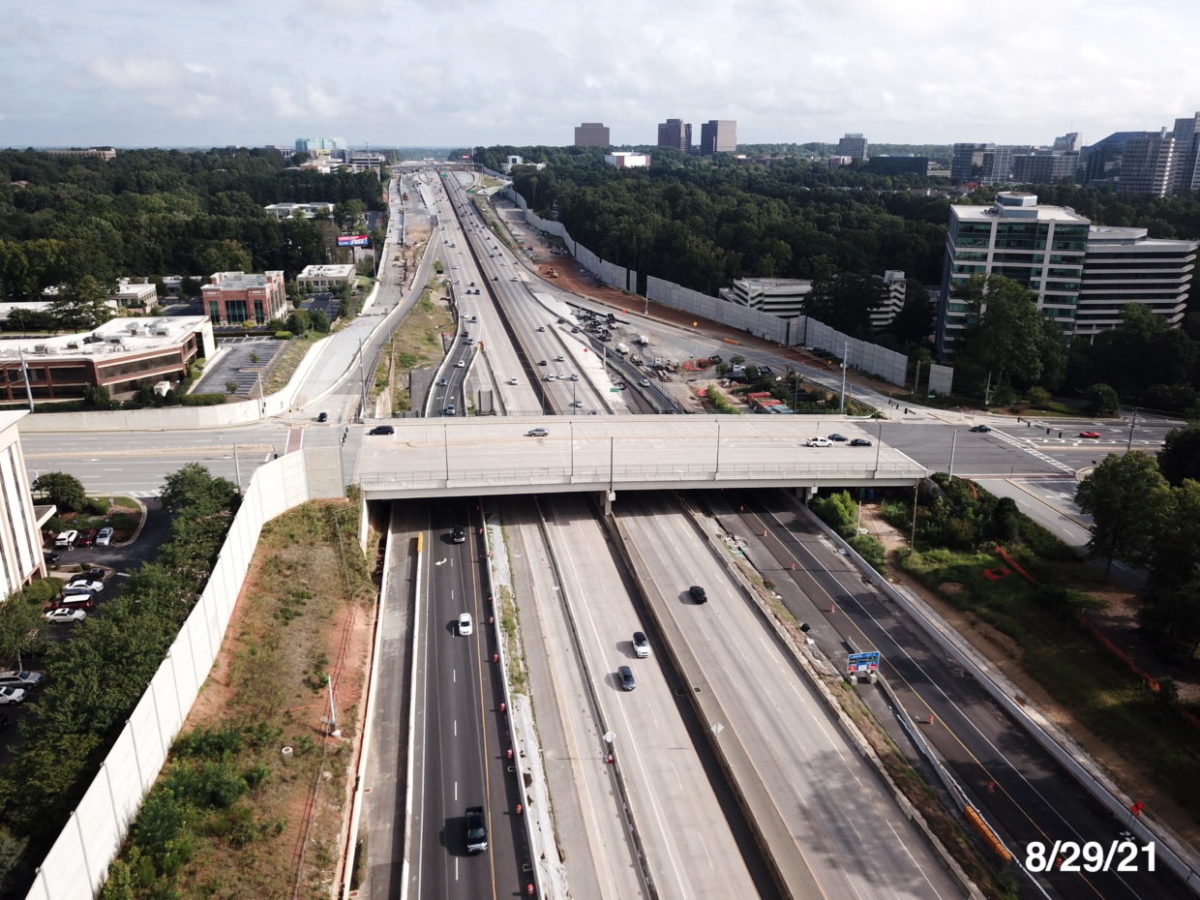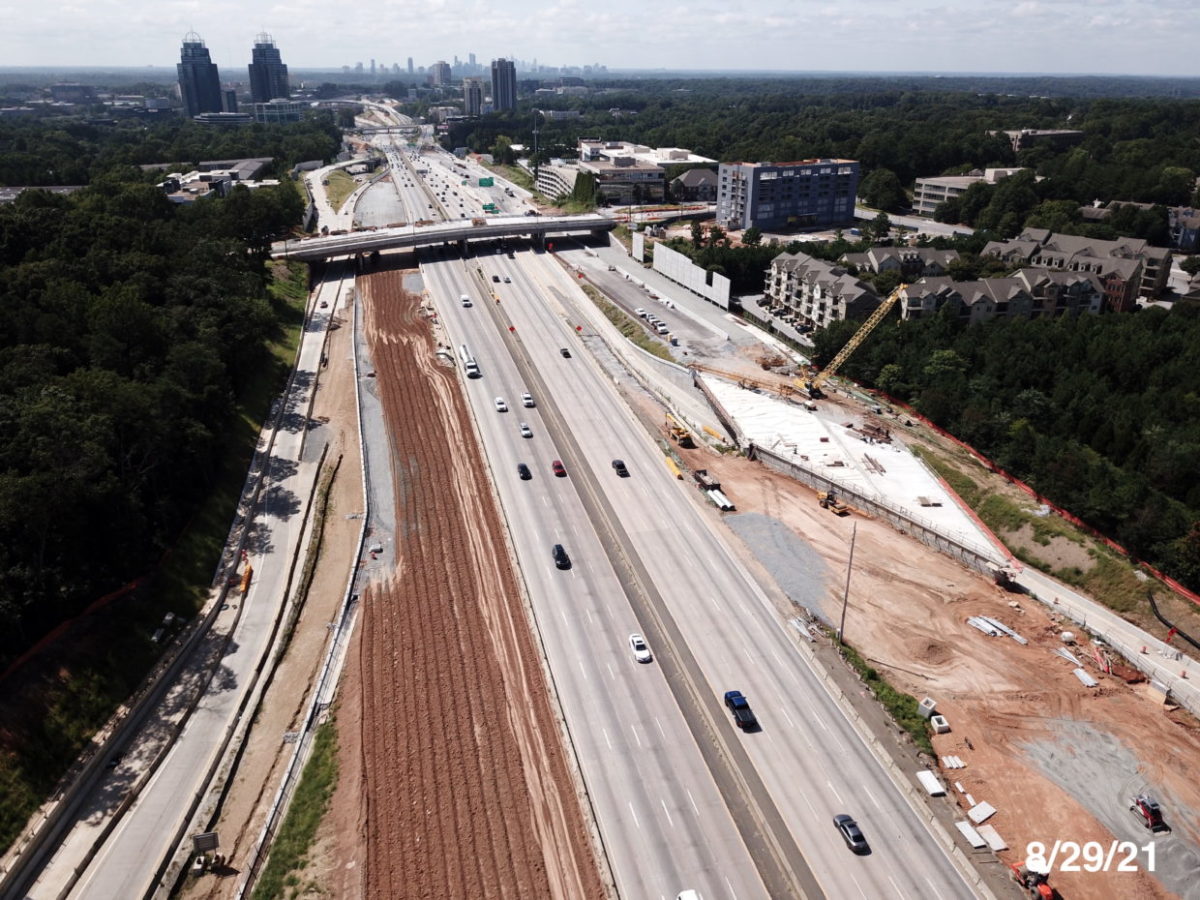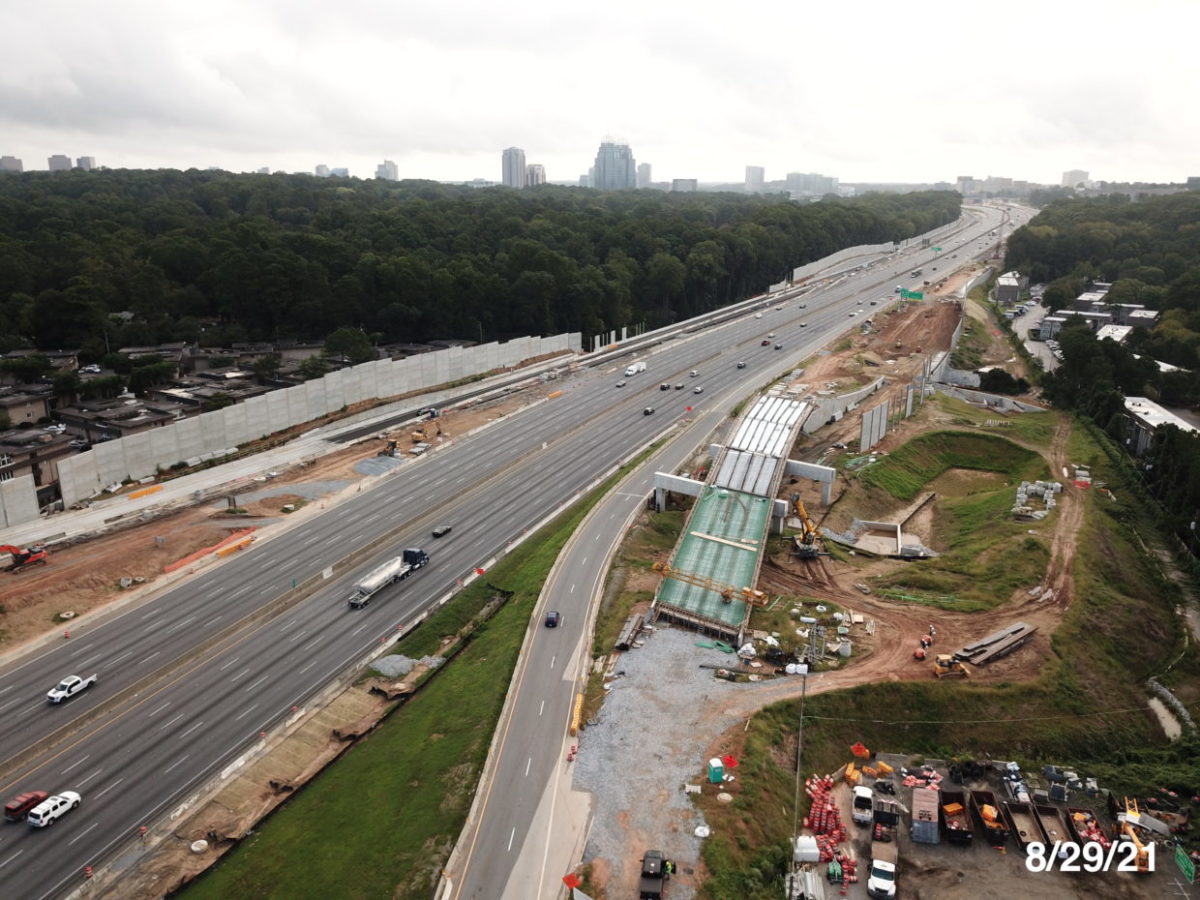Traffic is one of the surest signs a local economy is doing well — and one of its biggest headaches, too. One of Georgia’s greatest examples is the pretzel knot of highways that has made the Sandy Springs area boom.
The interchange of I-285 and Ga. 400 in the city’s southeast corner is like a mechanical heart pumping money into the city. It’s also a source of air pollution and seemingly endless reconstruction and widenings, with the latest rounds expected to extend at least into 2032 and to take many houses and other buildings. In short, the highways and Sandy Springs have an intense love-hate relationship.
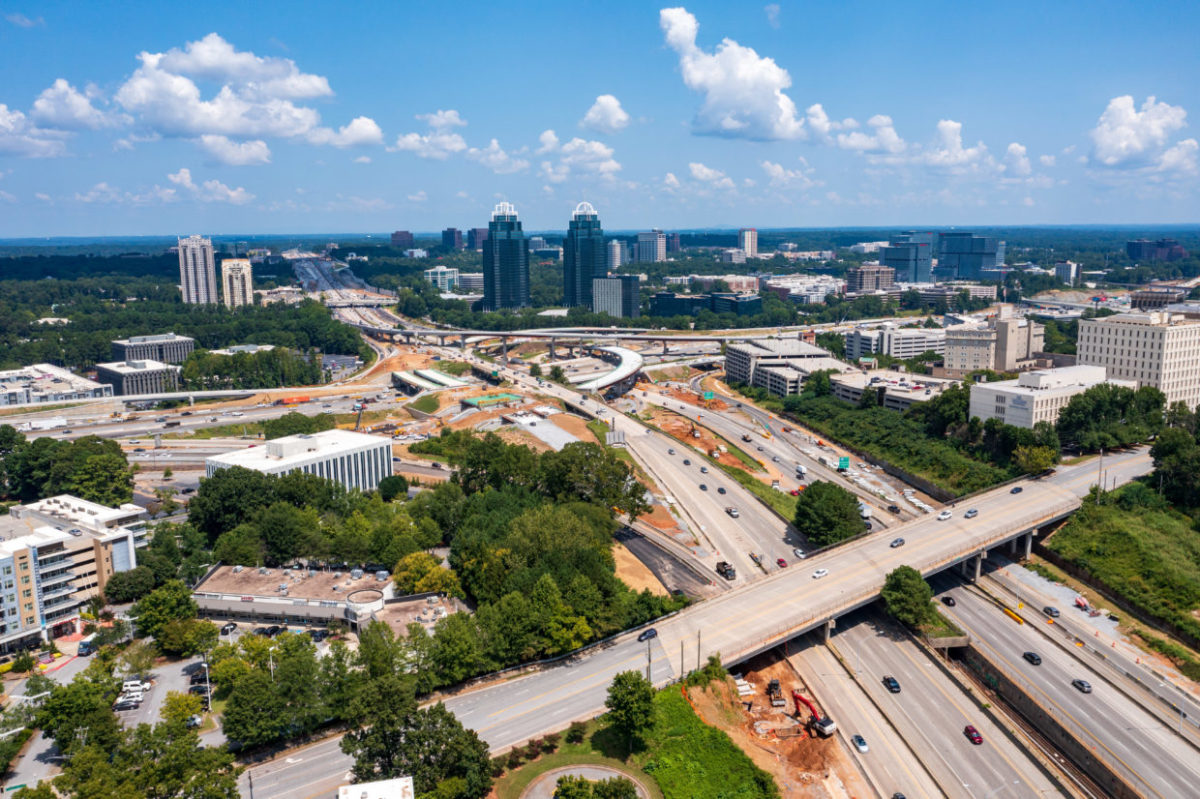
Completed in 1969, the gigantic I-285 highway that rings Atlanta is one of the busiest in the nation and so prominent that it’s called the “Perimeter” as a rough boundary between the city and the suburbs. On the northern side — or “top end,” as it’s known in local slang — it is responsible for never-ending economic growth that has turned farmland into Perimeter Center, an unofficial mini-city that includes portions of the actual cities of Sandy Springs, Dunwoody and Brookhaven.
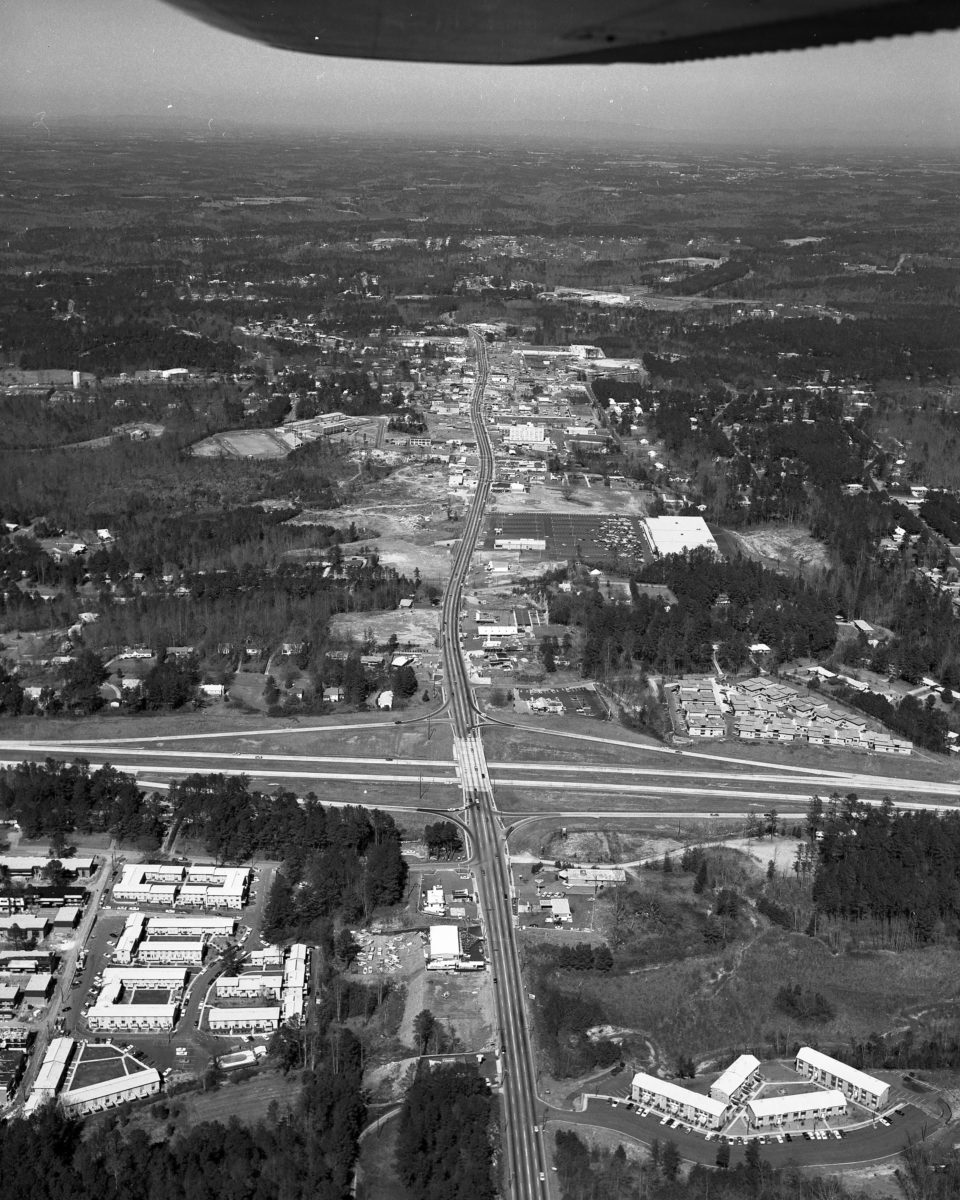
Ga. 400, which runs north-south between Atlanta and Lumpkin County, has been the icing on the economic cake for Sandy Springs and Perimeter Center. The section north of I-285, completed in 1981, connected Sandy Springs to the ever-growing suburbs even farther out from the Perimeter. The southern section, which opened in 1993, connected Sandy Springs to just about everything in Atlanta. That section connects I-285 to another major highway, I-85, through Atlanta’s Buckhead neighborhood. In addition, MARTA’s Red Line train system was extended into Sandy Springs and Dunwoody in 1996, with its tracks running through the median of Ga. 400’s southern section.
The impact of those highways on every type of business has been huge. As of 2021, Sandy Springs had nearly as many Fortune 500 companies as Atlanta proper, all of them located right on the highways. Tucked into the corners of the interchange itself are such major developments as the three-hospital Medical Center and the Concourse Center, a business complex that includes the city’s iconic “King and Queen” skyscrapers.

Traffic means growth, and growth means more traffic. The Georgia Department of Transportation is undertaking two mega-projects to improve and expand the highways around the interchange, as well as possibly adding public transit to reduce automobile congestion.
One project, dubbed “Transform 285/400,” is a reconstruction of the interchange and several connecting roadways. The project is not expanding the interchange’s capacity, but rather aims to make it safer and traffic flow smoother by eliminating the many places where drivers have to merge and cross lanes. Transform 285/400 began in 2017 and, while some new ramps and flyovers are now open, its completion has been repeatedly delayed. GDOT has said it expects to open all of the rebuilt lanes by the end of 2021, but paving and other work could continue into mid-2022.

The interchange of Abernathy Road and Ga. 400. Credit: GDOT 
New ramps to I-285 from Ashford Dunwoody Road in Dunwoody, looking west into Sandy Springs. Credit: GDOT 
Ga. 400 at Hammond Drive. Credit: GDOT 
I-285 passes over Peachtree Dunwoody Road. Credit: GDOT 
A view down Ga. 400 looking toward the Mount Vernon Highway bridge, which was replaced as part of the Transform 285/400 project. Credit: GDOT 
New ramps over Peachtree Dunwoody Road in the Medical Center. Credit: GDOT 
A new ramp under construction from Roswell Road to I-285 eastbound. Credit: GDOT 
A view of I-285 eastbound toward Dunwoody and Brookhaven. Credit: GDOT 
A view of the I-285/Ga. 400 interchange looking northwest. Credit: GDOT
And that’s just the beginning. GDOT also plans to build “Express Lanes” — or in plain English, toll lanes — to both highways in a series of sprawling projects originally intended to begin in 2022 and fully open as a system by 2032, with some sections opening earlier. However, bidding problems have repeatedly delayed that planning and the current timeline is unclear. Still, GDOT seems unlikely to abandon the project and property acquisition is underway, so expect orange barrels to remain out on Sandy Springs highways for at least another decade.
The toll lanes would be part of a metro-wide system that include some already open on I-75 and I-575. The idea is that overall traffic congestion will be reduced by allowing drivers the option of paying to drive in the presumably faster toll lanes.
The toll lanes would be an additional two lanes in both directions, some at ground level and some elevated on columns. GDOT is working with MARTA on a plan for public transit buses to use the Ga. 400 toll lanes with distinct access points and stations. Top-end cities are talking with GDOT and MARTA about similar service on the I-285 toll lanes.
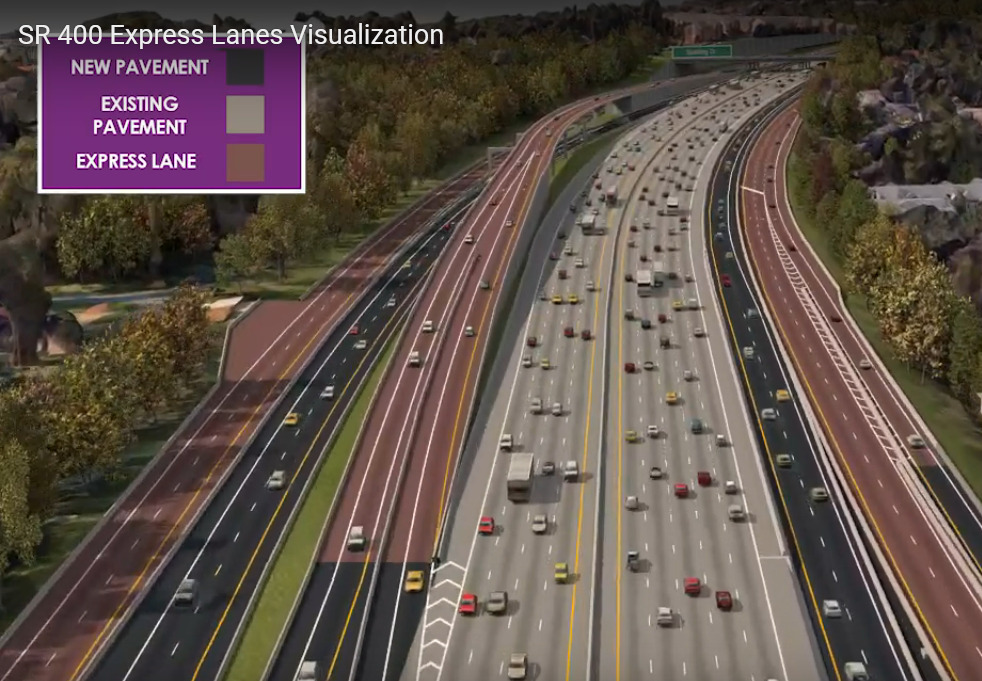
The expansion of the highways has always had the serious impact of demolishing homes and businesses in their path. Ga. 400’s southern expansion drew major protests that succeeded in limiting it extension from an original intended path all the way across Atlanta. In Sandy Springs, opposition has not reached such a pitch, but community groups and elected officials have often expressed serious concerns about the toll lanes projects, which are expected to take at least 40 homes and other buildings on Ga. 400 and possibly many more along I-285.
For homeowners who will remain, noise and headlight impacts are another concern, particularly for the elevated toll lanes that could rise 30 feet or more above adjacent neighborhoods. Air quality is affected on virtually any adjacent property, as passing vehicles emit exhaust and give off particles from tires and brakes. GDOT says its projects always fall within federal air quality guidelines. But those are all about tradeoffs, and the World Health Organization says that one class of small particles produced by vehicle emissions is linked to lethal diseases and has no known safe level of exposure. The Atlanta Regional Commission has mapped the estimated particulate air pollution along metro roadways, with the 285/400 interchange’s concentration second only to Atlanta’s Downtown Connector.
If you’re moving to Sandy Springs, I-285 and Ga. 400 are surely a big part of the reason why. They will be your essential connections to the rest of metro Atlanta as well as freeways you love to hate for traffic jams and crazy drivers. Those living very close to the highways should be aware of environmental impacts like noise and air pollution and that property acquisition for further expansions is always possible.

